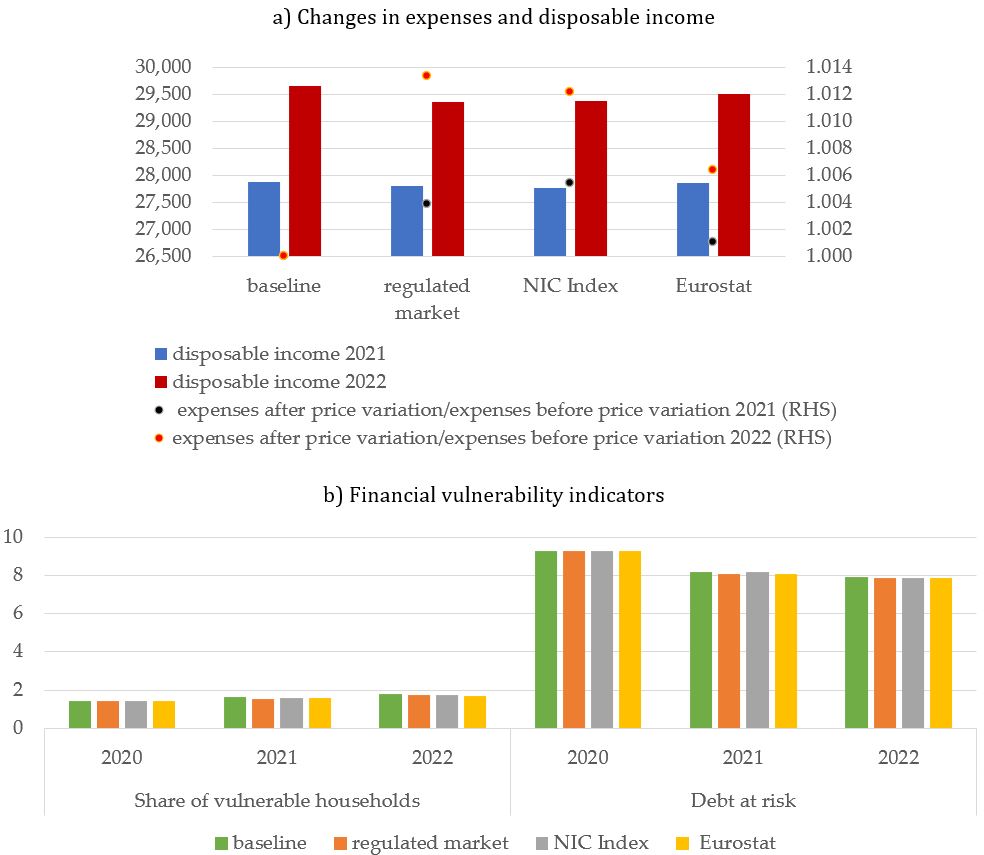References
Attinà, A., F. Franceschi, and V. Michelangeli (2020). Modelling households’ financial vulnerability with consumer credit and mortgage renegotiations. International Journal of Microsimulation 13 (1), 67–91.
Curci, N., M. Savegnago, G. Zevi, and R. Zizza (2022). The redistributive effects of inflation: a microsimulation analysis for Italy. Questioni di Economia e Finanza (Occasional Papers) 738, Bank of Italy, Economic Research and International Relations Area.
Faiella, I. and L. Lavecchia (2021). Households’ energy demand and the effects of carbon pricing in Italy. Questioni di Economia e Finanza (Occasional Papers) 614, Bank of Italy, Economic Research and International Relations Area.
Faiella, I. and L. Lavecchia (2022). Contenimento dei prezzi dell’energia e spesa delle famiglie. Energia 1 (1), 36–39.
Faiella, I., L. Lavecchia, V. Michelangeli, and A. Mistretta (2022). A climate stress test on the financial vulnerability of Italian households and firms. Journal of Policy Modeling 44 (2),396–417.
Guan, Y., J. Yan, Y. Shan, Y. Zhou, Y. Hang, R. Li, Y. Liu, B. Liu, Q. Nie, B. Bruckner, et al. (2023). Burden of the global energy price crisis on households. Nature Energy 8 (3), 304–316.
Michelangeli, V. and M. Pietrunti (2014). A microsimulation model to evaluate Italian households’financial vulnerability. International Journal of Microsimulation 7 (3), 53–79.








